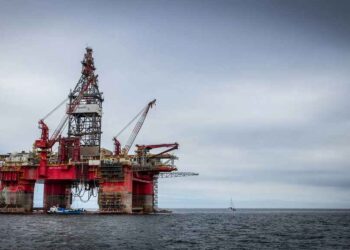Enbridge Energy’s Alberta Clipper Project is a 1,607km pipeline spanning the US and Canada. The 36in diameter pipeline runs from oil sands in Hardisty, Alberta, Canada, to a refinery in Superior, Wisconsin, US. It is the biggest project undertaken by Enbridge in its history.
The pipeline has an initial capacity of 450,000 barrels per day, which is expandable to 800,000bpd. The project received approval from the National Energy Board in August 2009 and required a presidential permit from the US State Department because it spanned the US-Canadian border.
Enbridge invested $3.3bn in the project. The pipeline was placed in service in April 2010. The first shipment was moved in October 2010. More than 3,000 people were involved in the construction of the pipeline.
The project was part of Enbridge’s $8bn expansion programme to supply crude oil to its North American customers. Production from the Canadian oil sands is expected to increase to 1.8 million barrels per day by 2015. Oil sands producers and refiners required a guarantee that sufficient pipeline infrastructure would be available to handle the increase in production. The new pipeline is expected to satisfy this need.
Construction and infrastructure
Initial construction works of the Alberta Clipper Pipeline began in 2008 with full-scale works launched after receiving project approval.
“Construction of the Alberta Clipper Pipeline began in 2008.”
The US portion of the pipeline was divided into four sections for construction. The sections included: Neche, North Dakota, to Viking, Minnesota; Viking to Clearbrook, Minnesota; Clearbrook to Deer River, Minnesota, and Deer River to Superior, Wisconsin. The pipeline follows the right-of-way of Enbridge’s existing pipelines. Two thirds of the pipeline runs through Canada.
Three pump stations were built at Hardisty, Alberta; Kerrobert, Saskatchewan; and Milden, Saskatchewan, requiring 1,100m³ of concrete. The project included installation of 32 mainline valves at various locations including Pembina, Marshall, Clearwater and Cass. Each valve is fenced in a 30ftx45ft area with a gate for access.
New equipment was installed at the existing pump stations at Viking, Clearbrook and Deer River. Pig sending and receiving trap, metering equipment and other infrastructure were installed at the Clearbrook pump station and Superior terminal.
The project also includes extension of the Superior terminal to accommodate the additional crude oil that is carried by the Alberta Clipper pipeline. Five new tanks were proposed to be constructed with a storage capacity of 250,000 barrels of crude each. The tanks have a diameter of 180ft and a height of 56ft.
Contractors for the Alberta Clipper Pipeline
WorleyParsons carried out detailed engineering for the Canadian portion of the pipeline.
The majority of the construction work was carried out by the Global Pipeline Partners joint venture. The joint venture consisted of Michels Corporation, Precision Pipeline and US Pipeline. Michels was responsible for the construction of two spreads of the pipeline. One spread spanned 112km in North Dakota and Minnesota and the other spanned 107km from Snake River to Clearbrook in Minnesota. Enduro Pipeline Services carried out the inspection of the first section.
Willbros Group was involved in the construction of a portion of the pipeline between Sherwood Park and Hardisty.
“The Alberta Clipper Pipeline is part of Enbridge’s $8bn expansion programme to supply crude oil to its North American customers.”
Shaw Pipe Protection won a $50m contract to provide coatings for the pipeline. It provided fusion-bonded epoxy anti-corrosion coating for the pipeline.
PCL was awarded the contract for carrying out civil and foundation works for the three pump stations in Canada. The scope of work included installation of piling, foundations and other infrastructure.
NAC was given an $8m contract for carrying out civil works for the project at Saskatchewan and Manitoba. The scope of work included excavation, topsoil stripping, concrete pouring and structural steel installation for the pump stations.
Jacobs was the consultant for the works carried out by NAC.
Robert B Somerville and Techint Canada joint venture won the contract for the construction of three sections of the pipeline (171km, 98.6km and 77.7km). The joint venture also constructed three pump stations in Cromer, Glenboro and Gretna. Colt Engineering Corporation was the engineer for these works. Robert B Somerville subcontracted Aecon Utilities to carry out works on the three pump stations.

















































